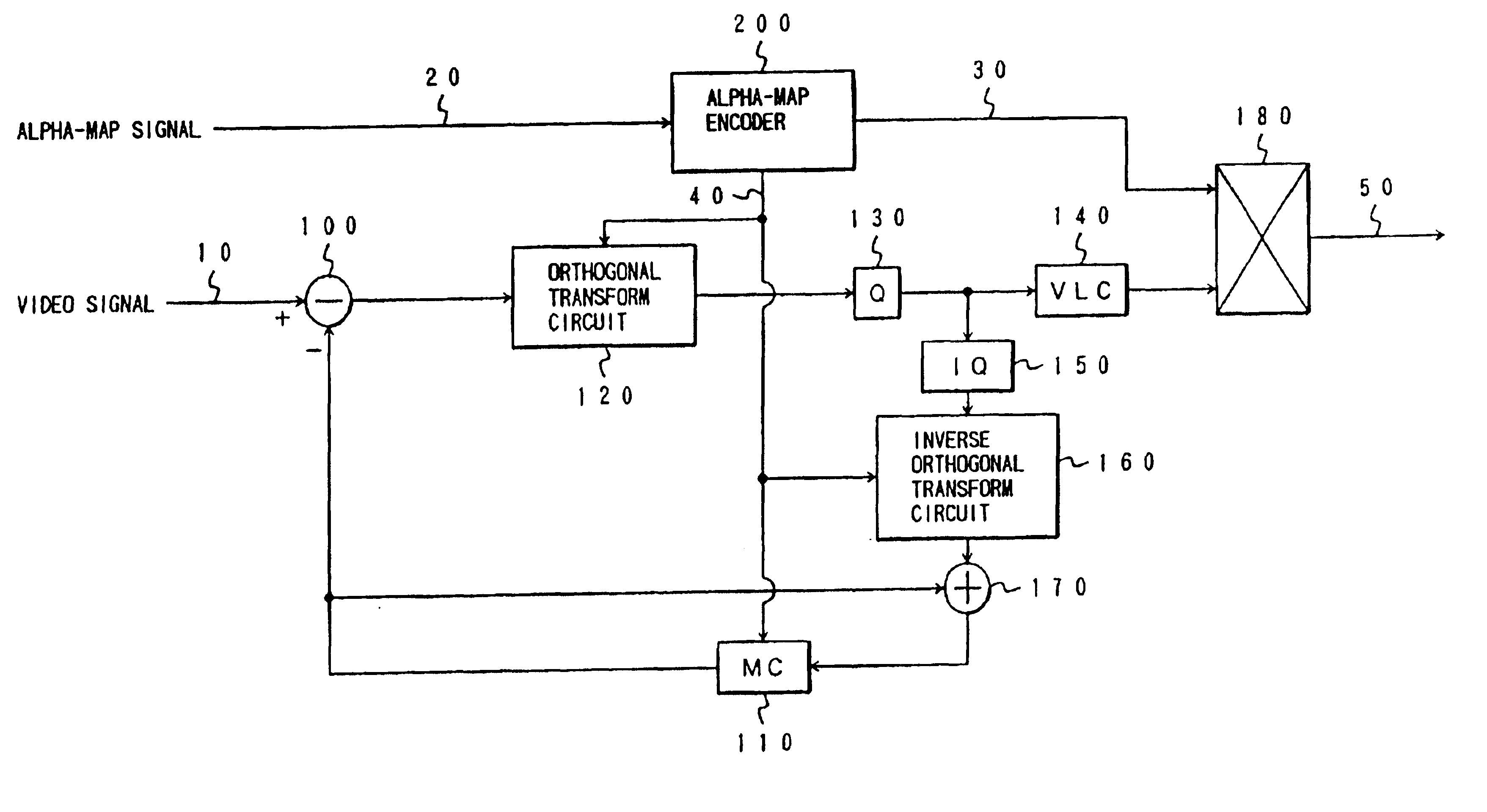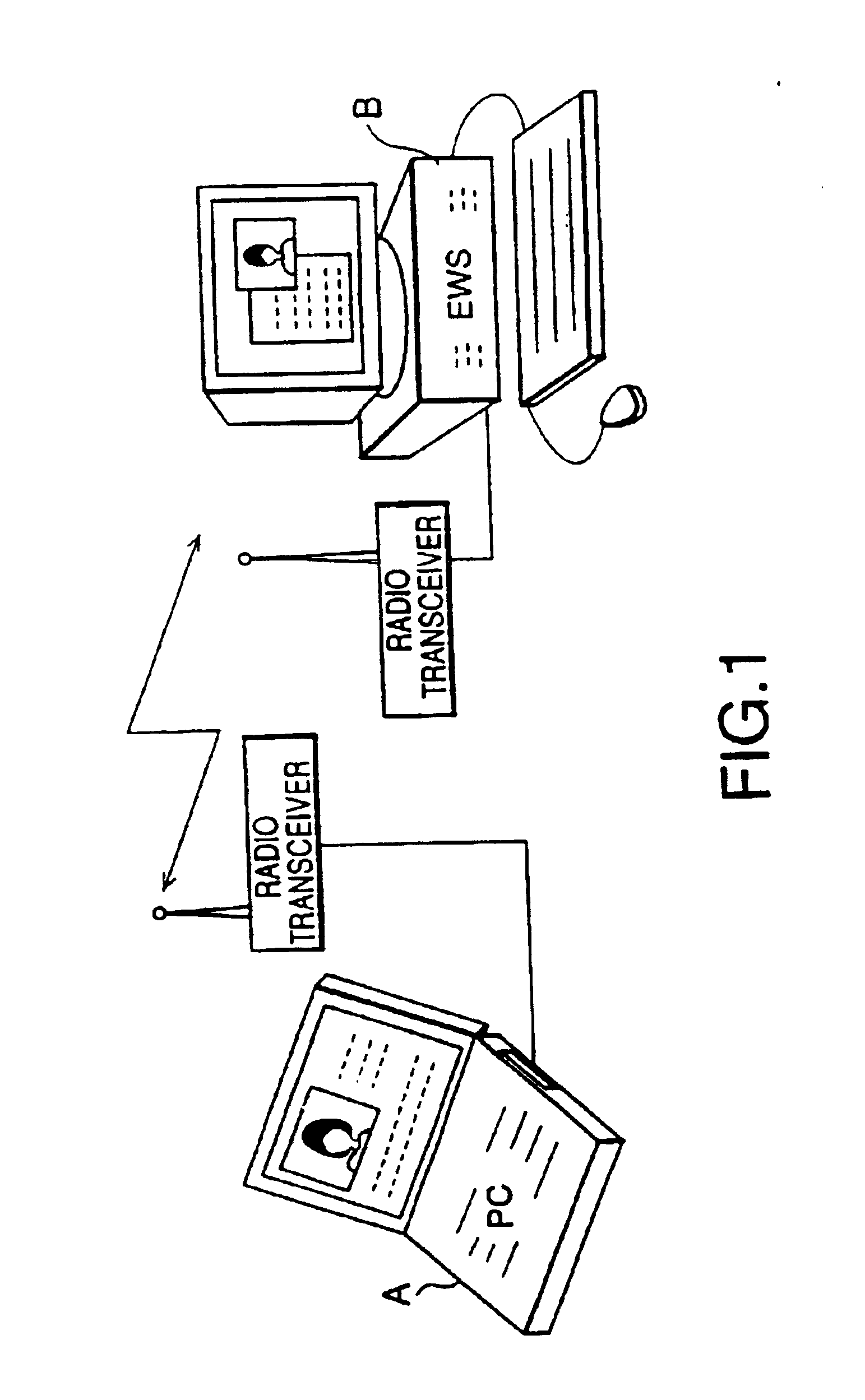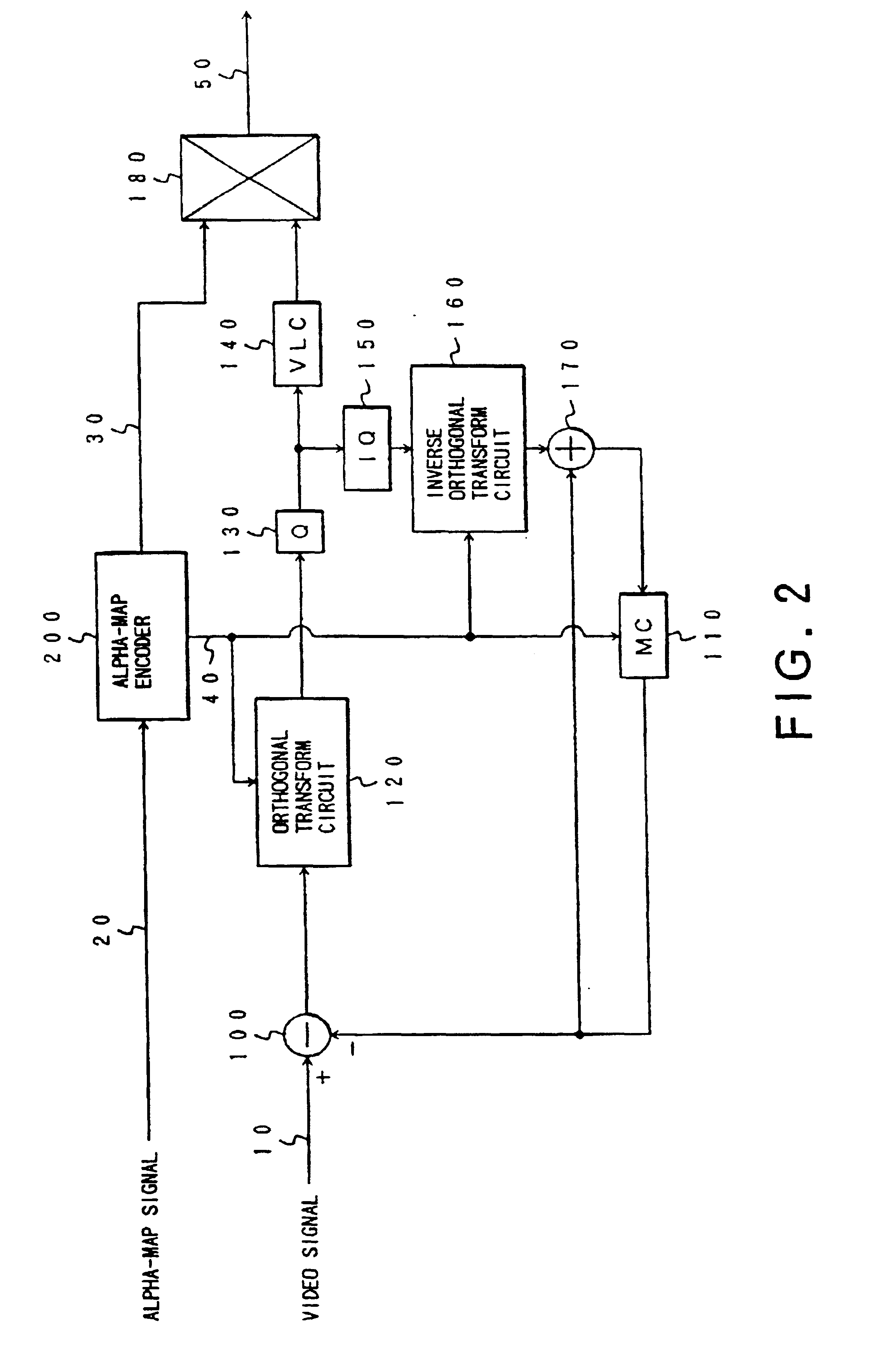Video coding and video decoding apparatus
a video coding and video decoding technology, applied in the field of video coding apparatus and video decoding apparatus, can solve the problem of reducing the coding efficiency of alpha-map codes
- Summary
- Abstract
- Description
- Claims
- Application Information
AI Technical Summary
Benefits of technology
Problems solved by technology
Method used
Image
Examples
sixth embodiment
The foregoing is an example of the processing in which macro blocks MB are compression-encoded one after another in raster scan order and decoded in raster scan order (order of x-direction scan in x-y scan). However, when macro blocks MB are compression-encoded and decoded one after another, the compression processing can be performed more efficiently, depending on the state of a picture, when performed in the vertical direction (in order of y-direction scan in x-y scan) than when performed in raster scan order. Therefore, it is useful to realize a method capable of selectively performing processing in raster order or in the vertical direction in accordance with the state of a picture. This method will be described below as the
The sixth embodiment of the present invention will be described below with reference to FIGS. 38A to 38D. System configurations required in this embodiment can also be basically the same as the configurations shown in FIGS. 2 and 3. That is, it is only necessa...
seventh embodiment
It is, however, in some instances also possible to reduce the amount of codes by processing macro blocks MB, as square blocks, after rearranging them into wide rectangular blocks, instead of directly processing them in the form of a square block. This method will be described below as the
The seventh embodiment of the present invention will be described below with reference to FIGS. 39A to 39C. System configurations required in this embodiment can also be basically the same as the configurations shown in FIGS. 2 and 3. It is only necessary to design the system such that encoding is performed by the alpha-map encoder 200 shown in FIG. 2 and decoding is performed by the alpha-map decoder 400 shown in FIG.3.
In this embodiment, the values of “top reference” and “left reference” in the fifth embodiment are not used in order to independently encode macro blocks MB.
FIG. 39A is a view for explaining the scan order of this embodiment. A square block of n×n pixels constituting the macro block ...
eighth embodiment
Even in the processing of macro blocks MB, it is in many instances inefficient to directly compress blocks with the macro block size. For example, when every line in a macro block MB assumes the same state of a picture such as when only a vertical belt-like line exists in a picture, data can be faithfully reproduced without decreasing the resolution even if the data is compressed while lines are thinned. An optimum method for a picture like this will be described below as the
The eighth embodiment of the present invention will be described below with reference to FIGS. 6, 8, and 40A and 40B. System configurations required in this embodiment can also be basically the same as the configurations shown in FIGS. 2 and 3. It is only necessary to design the system such that encoding is performed by the alpha-map encoder 200 shown in FIG. 2 and decoding is performed by the alpha-map decoder 400 shown in FIG. 3.
PUM
 Login to View More
Login to View More Abstract
Description
Claims
Application Information
 Login to View More
Login to View More - R&D
- Intellectual Property
- Life Sciences
- Materials
- Tech Scout
- Unparalleled Data Quality
- Higher Quality Content
- 60% Fewer Hallucinations
Browse by: Latest US Patents, China's latest patents, Technical Efficacy Thesaurus, Application Domain, Technology Topic, Popular Technical Reports.
© 2025 PatSnap. All rights reserved.Legal|Privacy policy|Modern Slavery Act Transparency Statement|Sitemap|About US| Contact US: help@patsnap.com



